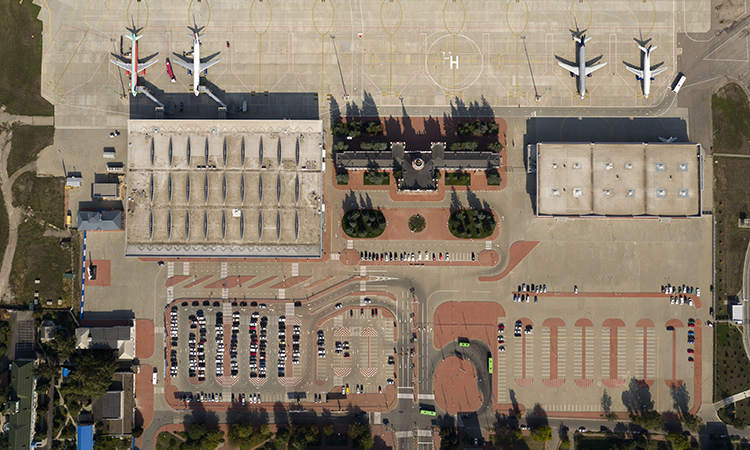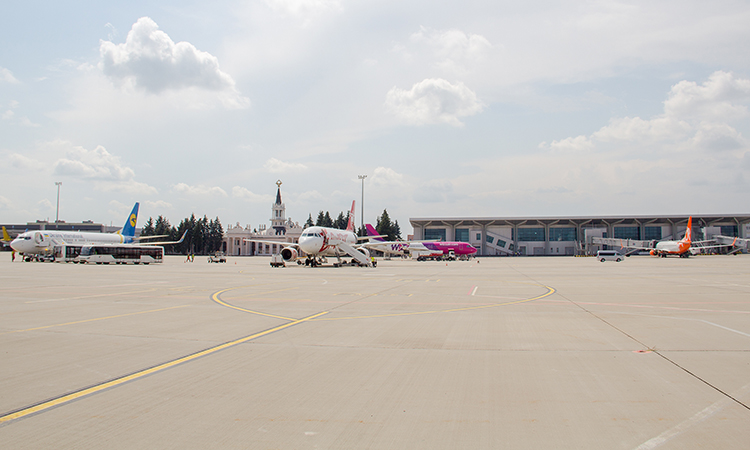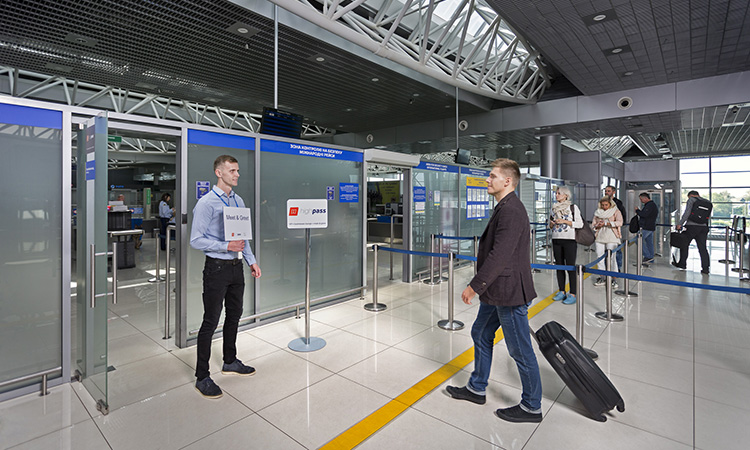Maximising future aeronautical and non-aeronautical revenues at Kharkiv Airport
- Like
- Digg
- Del
- Tumblr
- VKontakte
- Buffer
- Love This
- Odnoklassniki
- Meneame
- Blogger
- Amazon
- Yahoo Mail
- Gmail
- AOL
- Newsvine
- HackerNews
- Evernote
- MySpace
- Mail.ru
- Viadeo
- Line
- Comments
- Yummly
- SMS
- Viber
- Telegram
- Subscribe
- Skype
- Facebook Messenger
- Kakao
- LiveJournal
- Yammer
- Edgar
- Fintel
- Mix
- Instapaper
- Copy Link
Posted: 22 March 2021 | Vladislav Ilyin | No comments yet
Vladislav Ilyin, Chief Commercial Officer of Aviation Revenues of Kharkiv International Airport, speaks to International Airport Review about the importance of not relying on expanding your airport’s route network to be successful, but also focusing on growing non-aviation revenues.


Credit: Kharkiv International Airport
Aviation activities: challenges and solutions
Development of the domestic flight route network
We believe that domestic market development is a priority for us, because 2020’s events have demonstrated that, during the global crisis, international traffic is the first to suffer”
The share of passenger flow on domestic flights at Kharkiv International Airport (HRK) fluctuates around 20 per cent each year. Air carriers are more interested in opening international destinations. Yet, we are working with airlines to increase the number of domestic flights. We believe that domestic market development is a priority for us, because 2020’s events have demonstrated that, during the global crisis, international traffic is the first to suffer. Markets with a steady demand for domestic flights are less sensitive to external factors and have a stable passenger flow, allowing airports and airlines to survive times of great turbulence.
For several years, there have been regular flights from Kharkiv to the capital of Ukraine, Kyiv. But, thanks to our cooperation with SkyUp, in 2019, we were able to expand the domestic route network with seasonal flights to Lviv and Odesa, some of the most popular tourist cities in Ukraine.
Attracting new carriers
The lack of confirmed demand for a particular destination is a common development issue of all regional airports. Thus, airlines prefer to increase the frequency of flights to the destination in question from the capital airport, rather than open the flight route from the regional airport.
To meet this challenge, we have developed a flexible new flight support programme for airlines. As part of it, our team creates and performs marketing activities to drive up demand for new directions and increase their load.


Credit: Kharkiv International Airport
Non-aviation activities: problems and solutions
Sale of additional services
Over the past 10 years, the share of low-cost carriers (LCC) in the global and, particularly, in the European market has grown considerably and continues to rise. In Europe in 2018, the shares of LCCs and full service carriers (FSCs) were 33 per cent and 67 per cent, respectively. Our airport was no exception. Between 2018 and 2019, the largest number of destinations from Kharkiv was opened by such LCCs as Wizz Air, Ryanair and SkyUp.
The more passengers that an LCC carries at an airport, the lower fare it pays”
Due to the LCC business model, the situation on the market developed in such a way that, with an increase in passenger flow, the aviation revenue per passenger began to decline. The more passengers that an LCC carries at an airport, the lower fare it pays.
With that in mind, we cannot rely exclusively on increasing aviation revenues.
According to Airports Council International’s (ACI) Airport Economics Report 2017, with a total average cost per passenger of $13.69, aviation revenues averaged only $9.95. This demonstrates the importance of modern airport non-aviation revenues for its financial sustainability.
Selling ancillary services (Meet & Greet, Business Lounge and VIP services) is one of the ways to increase our non-aviation revenues. Those services were not in high demand earlier; therefore, we changed our approach, switching the focus from offline to online sales. In 2019, we began cooperation with HighPass in service sales activities on our website, increasing the number of sales channels, as well. Now, our services are being sold by airlines and online travel agencies. The result was that – even during the pandemic – we multiplied the number of passengers who started using those services.


Credit: Kharkiv International Airport
Updating the infrastructure
Formerly, airports served the utilitarian function for tourists who were eager to get through the terminals as soon as possible and just might buy a snack or magazine there before their flight. As safety requirements heighten around the world, passengers now arrive at the airport earlier than usual. While waiting for their flights, they tend to prefer to work or play using their electronic gadgets.
We need to be in tune with this trend, considering everything carefully and offering tourists more comfort. Therefore, one of the main tasks that we have set for ourselves is to update the passenger terminal based on the customer journey map, and we expect to see:
- An increase in the number of food and retail outlets
- Expansion of the duty-free zone and range
- Re-planning of waiting rooms due to zoning for recreation areas, work and pastime with children
- Expansion of the business lounge
- A creation of separate entertainment zones, including interactive ones, in cooperation with large local companies.
We strive to improve the user experience and hope that, in the next five years, spending time at our airport will become a specific pleasant voyage for our passengers.
Creating an airport value proposition
As airports transform into complex customer-focused companies, new challenges arise. Airports begin competing, not only for airlines, but also for passenger share, which, as of 2019, increased to 4.5 billion people.
Airports can no longer rely only on expanding the route network to be successful. They must be known for the experience that they offer passengers”
Airports can no longer rely only on expanding the route network to be successful. They must be known for the experience that they offer passengers. An airport is like a commercial organisation. But, often, airports overlook common ways of promoting their goods and services that are widely used in other companies (advertising, PR, loyalty programmes, etc.). If you only offer your product or service when the passenger is stepping inside your terminal, then you’ve missed the right moment. The period up to the moment of landing is not enough for passengers to believe in the quality, benefits and values of a particular airport.
That’s why we began to pay more attention to marketing and especially to the creation and development of our brand. In 2019, we conducted market research involving 1,000 passengers at our airport. It formed the basis of a marketing strategy that includes:
- An analysis of the market and competitors
- A description of the target audience
- An analysis of the main problems that the strategy must deal with
- The key brand messages underlying the work of the whole airport: from a welcome at the check-in to the targeted advertising on Facebook
- A description and stages of the advertising campaign.
This strategy has been formed for the next five years, and it steers all of our next steps in the right direction. We are, therefore, confident that, soon, we’ll be able to make our passengers happy and pleasantly surprised.
Vladislav Ilyin is the Chief Commercial Officer of Aviation Revenues of Kharkiv Airport and has been with the airport for over 10 years. He is responsible for the development and implementation of the airport’s route network development strategy, key account management, new customer (airlines) acquisition and brand development. Vladislav participated in the European Football Championship EURO-2012 and the Winter Olympics SOCHI-2014 projects, and is currently involved on the Kharkiv Airport project. One of Vladislav’s key achievements is overseeing a 451 per cent increase in passenger traffic from 243,000 passengers in 2010, to 1,340,800 passengers in 2019, and the number of destinations increased from nine to 35.
Related topics
Aeronautical revenue, Airside operations, Non-aeronautical revenue, Passenger experience and seamless travel, Passenger volumes, Retail, Route development, Terminal operations


















